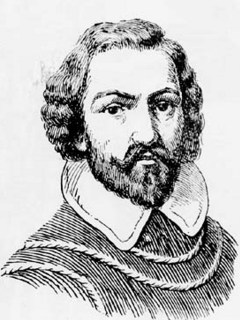
Juan Rodríguez Cabrillo was an Iberian maritime explorer best known for investigations of the West Coast of North America, undertaken on behalf of the Spanish Empire. He was the first European to explore present-day California, navigating along the coast of California in 1542–1543 on his voyage from New Spain.

WD-40 is an American brand and the trademark of a penetrating oil manufactured by the WD-40 Company based in San Diego, California. Its formula was invented for the Rocket Chemical Company in 1953, before it became the WD-40 Company. WD-40 became available as a commercial product in 1961. It acts as a lubricant, rust preventive, penetrant and moisture displacer. There are specialized products that perform better than WD-40 in many of these uses, but WD-40's flexibility has given it fame as a jack of all trades. WD-40 stands for Water Displacement, 40th formula.
Pedro Fages (1734–1794) was a Spanish soldier, explorer, first Lieutenant Governor of the province of the Californias under Gaspar de Portolá. Fages claimed the governorship after Portolá's departure, acting as governor in opposition to the official governor Felipe de Barri, and later served officially as fifth (1782–91) Governor of the Californias.
The ideas of the Age of Enlightenment came to Spain in the 18th century with the new Bourbon dynasty, following the death of the last Habsburg monarch, Charles II, in 1700. The period of reform and 'enlightened despotism' under the eighteenth-century Bourbons focused on centralizing and modernizing the Spanish government, and improvement of infrastructure, beginning with the rule of King Charles III and the work of his minister, José Moñino, count of Floridablanca. In the political and economic sphere, the crown implemented a series of changes, collectively known as the Bourbon reforms, which were aimed at making the overseas empire more prosperous to the benefit of Spain.
Norman Bernard Larsen (1923—1970) was an American industrial chemist.
José Francisco Ortega was a New Spanish soldier and early settler of Alta California. He joined the military at the age of twenty-one and rose to the rank of sergeant by the time he joined the Portola expedition in 1769. At the end of his military duty he would be granted land which he named Rancho Nuestra Senora del Refugio near Santa Barbara.

Ellen Browning Scripps was an American journalist and philanthropist who was the founding donor of several major institutions in Southern California. She and her half-brother E. W. Scripps created the E. W. Scripps Company, America's largest chain of newspapers and patron of the Scripps National Spelling Bee, linking Midwestern industrial cities with booming towns in the West. By the 1920s, Ellen Browning Scripps was worth an estimated $30 million, most of which she gave away.

Rosa Smith Eigenmann was an American ichthyologist, as well as a writer, editor, former curator at the California Academy of Sciences, and the first librarian of the San Diego Society of Natural History. She "is considered the first woman ichthyologist in the United States." Eigenmann was also the first woman to become president of Indiana University's chapter of Sigma Xi, an honorary science society. She authored twelve published papers of her own between 1880 and 1893, and collaborated with her husband, Carl H. Eigenmann, as "Eigenmann & Eigenmann" on twenty-five additional works between 1888 and 1893. Together, they are credited with describing about 150 species of fishes.

The San Diego Natural History Museum is a museum located in Balboa Park in San Diego, California. It was founded in 1874 as the San Diego Society of Natural History. It is the second oldest scientific institution west of the Mississippi and the oldest in Southern California. The present location of the museum was dedicated on January 14, 1933. A major addition to the museum was dedicated in April 2001, doubling exhibit space.

Fort Guijarros was a Spanish fort in what is now San Diego, California, USA. Its name means "Fort Cobblestones" in English. It was built in 1797 on Ballast Point as the first defensive fortifications for San Diego Bay. It was involved in the Battle of San Diego, a naval battle between the fort and an American trading vessel. The site is registered as California Historical Landmark #69.

Adrienne Lois Kaeppler was an American anthropologist, curator of oceanic ethnology at the National Museum of Natural History at the Smithsonian Institution in Washington, DC. She served as the President of the International Council on Traditional Music between 2005 and 2013. Her research focused on the interrelationships between social structure and the arts, including dance, music, and the visual arts, especially in Tonga and Hawaii. She was considered to be an expert on Tongan dance, and the voyages of the 18th-century explorer James Cook.
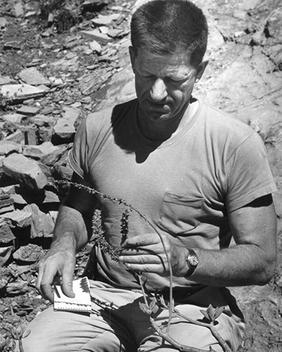
Reid Venable Moran was an American botanist and the curator of botany at the San Diego Natural History Museum from 1957 to 1982.
Elmer Yale Dawson was an American botanist, phycologist, taxonomist, ecologist, and naturalist writer. He popularized science and natural history with his books and articles on topics ranging from California cacti and North American cacti, to California seashore plants and marine algae, desert plant ecology, salt marsh wetlands, and anthropology topics including ethnohistory and ethnobiology of Seri Native American Indian culture of the northern Gulf of California.
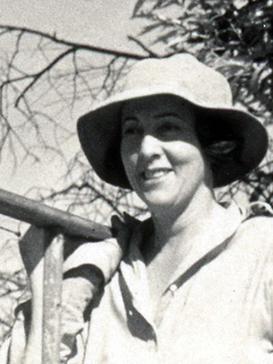
Margaret R. Wood Bancroft, was an American naturalist and explorer of Baja California. She was also a social leader.
George Edmund Lindsay was an American botanist, naturalist, and museum director. From 1956 to 1963, he was director of the San Diego Natural History Museum and served as Director of the California Academy of Sciences from 1963 to 1982. At both institutions, Lindsay led research field expeditions to the islands in the Sea of Cortez found between the Baja California Peninsula and mainland Sonora, Mexico. These expeditions relied on the Vermilion Sea Field Station at Bahia del Los Angeles as their base of operations, which he facilitated and organized. He was active in transnational conservation efforts to protect the islands as biodiversity sanctuaries in the Gulf of California.

Ethel Bailey Higgins was an American botanist and the curator of botany at the San Diego Natural History Museum from 1943 to 1957; she continued to serve as associate curator from 1957 to 1963. Higgins authored Our Native Cacti (1931), and other popular works on plants of the southwestern United States and northern Mexico.

Mary Chase Walker, Mrs. Morse was an American schoolteacher, pioneer, and suffragette. In 1865 she became the first school teacher at Mason Street Schoolhouse, the first public school to be built in San Diego County, California. She recorded her Recollections of Early Times in San Diego in 1898.
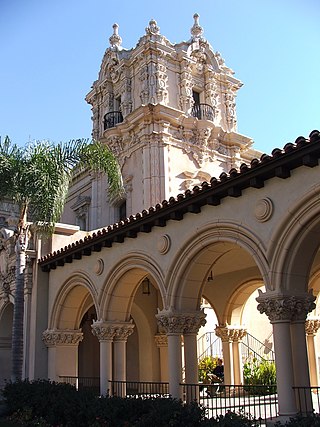
Casa de Balboa is a building in San Diego's Balboa Park, in the U.S. state of California. The building was originally known as the Commerce and Industries Building, and later called the Canadian Building, the Palace of Better Housing, and the Electric Building. It is currently home to the Museum of Photographic Arts, the San Diego History Center, the San Diego Model Railroad Museum, and the Balboa Art Conservation Center.
Wanda M. Corn is an American art and cultural historian.
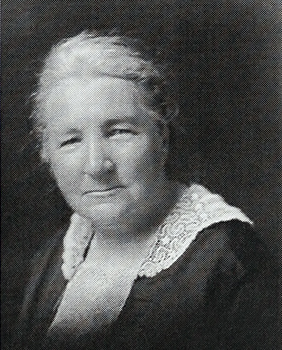
Kate Brown Stephens was an American naturalist and the curator of mollusks and marine invertebrates at the San Diego Natural History Museum from 1910 to 1936.













